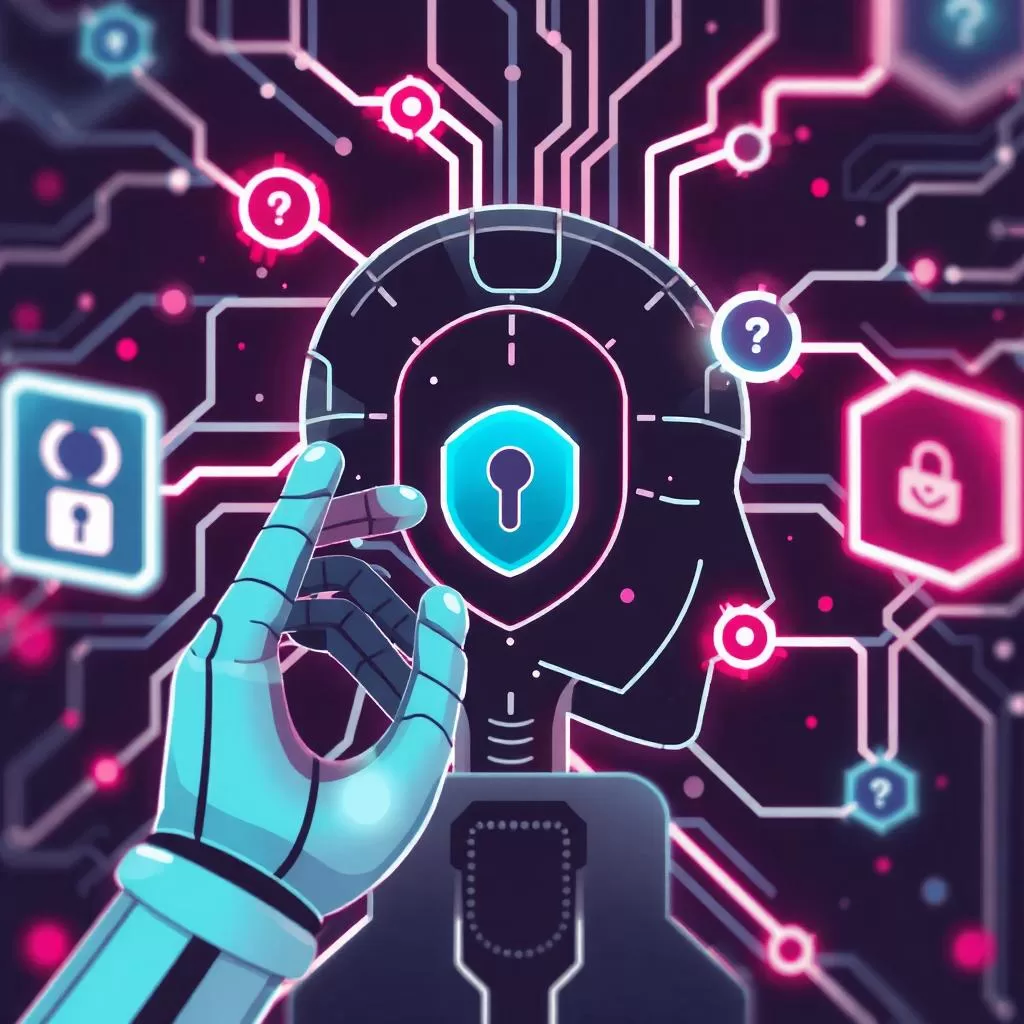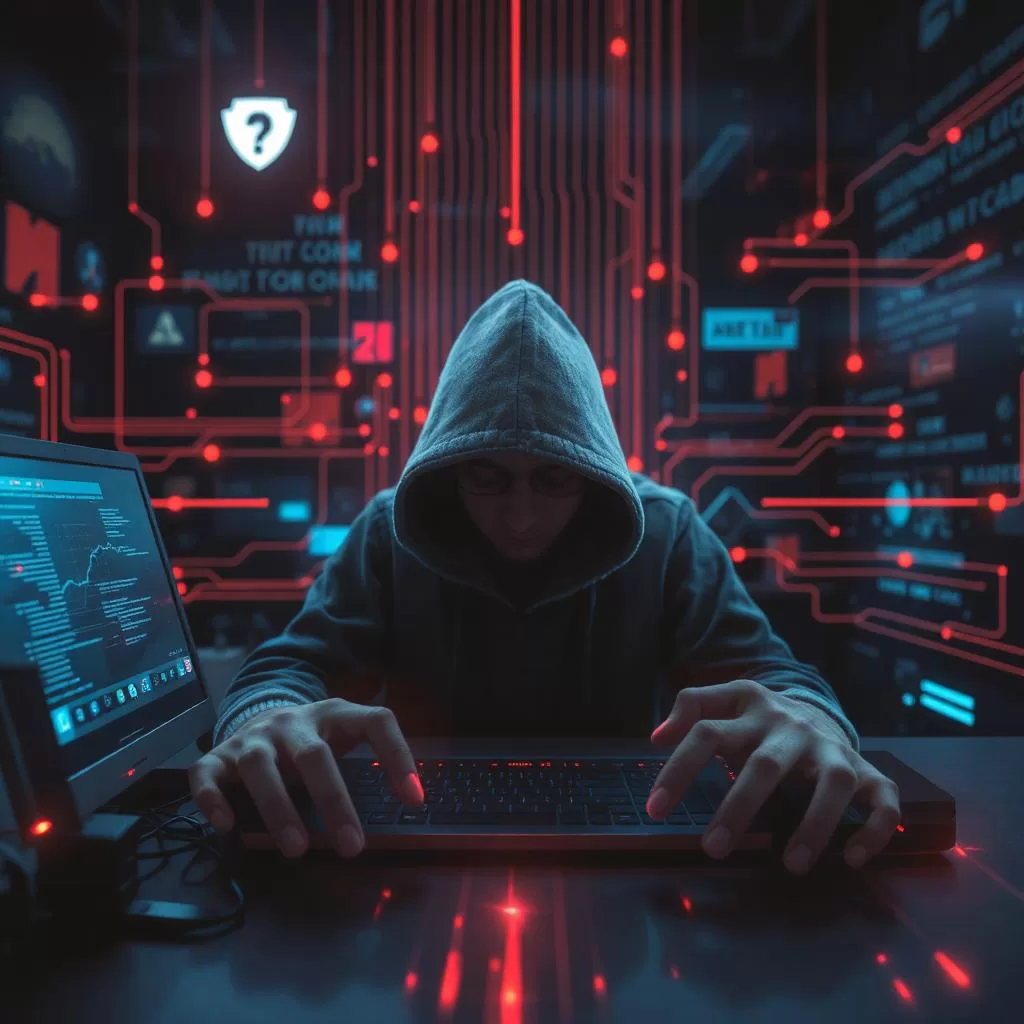Cybersecurity Threats in 2025 and How to Stay Protected
As technology evolves, so do cybersecurity threats. With the rise of AI, IoT, and quantum computing, hackers are developing more sophisticated attacks, putting businesses and individuals at risk. But what are the biggest cybersecurity threats of 2025, and how can you protect yourself?
What You’ll Learn in This Article:
- The top emerging cyber threats in 2025
- How AI and quantum computing impact cybersecurity
- The best cybersecurity practices to stay safe
Top Cybersecurity Threats in 2025
1. AI-Powered Cyber Attacks
Hackers are increasingly leveraging Artificial Intelligence (AI) to enhance the sophistication and effectiveness of their cyberattacks. This evolving trend makes detecting and mitigating cyber threats more challenging than ever before. AI-driven malware, for instance, has the capability to bypass traditional security systems, rendering outdated defenses ineffective. Unlike conventional malware, AI-powered threats can adapt and learn from the environment, improving their attack methods in real time.
In addition, AI is enabling hackers to launch phishing attacks with deepfake technology. This makes their fraudulent communications more convincing and harder for users to identify as malicious. By mimicking trusted individuals or organizations, these attacks are more likely to deceive victims and steal sensitive information.
Furthermore, AI allows hackers to automate various aspects of the hacking process. This enables them to conduct large-scale attacks at an unprecedented speed. This automation not only increases the volume of attacks but also enhances their precision. This allows cybercriminals to target specific vulnerabilities with greater efficiency. As a result, defending against these threats requires a more advanced, proactive approach to cybersecurity.
💡 Example: AI-generated voice deepfakes have been used to scam companies out of millions.
2. Quantum Computing & Cryptography Risks
Quantum computers have the potential to revolutionize cybersecurity, but this innovation also brings significant risks. One of the most alarming concerns is that quantum computing could break traditional encryption methods, making current security protocols obsolete. Unlike classical computers, which rely on binary code, quantum computers harness the power of quantum bits (qubits) to process vast amounts of data simultaneously, enabling them to solve complex problems at unprecedented speeds.
How Quantum Computing Affects Cybersecurity:
✔ Faster password cracking
Quantum computers could drastically reduce the time it takes to crack passwords. This renders current encryption techniques, such as RSA and AES, vulnerable. With the ability to process exponentially more data, quantum machines could potentially decipher encrypted data in mere seconds, something that would take classical computers years or even centuries to achieve.
✔ New encryption standards required
In response to this emerging threat, governments and cybersecurity experts are working diligently to develop post-quantum cryptography standards. These new encryption methods will be designed to withstand attacks from quantum computers, ensuring the continued safety of sensitive information. However, the transition to these new systems presents its own set of challenges. One of the challenges is the need for widespread adoption and compatibility with existing infrastructure.
As quantum technology continues to advance, cybersecurity experts must stay ahead of these developments . This is to safeguard against the vulnerabilities they create.
💡 Example: The NSA and Google are already working on quantum-safe encryption to counter future threats.
🔗 Related: Quantum Computing vs. Classical Computing
3. Ransomware 2.0 Cybersecurity Threat in 2025
Ransomware attacks are becoming more advanced, with hackers using AI and automation to target businesses.
New Ransomware Tactics in 2025:
- Double Extortion – Hackers steal data before encrypting it, threatening to leak it online
- Ransomware-as-a-Service (RaaS) – Cybercriminals sell ransomware kits to inexperienced hackers
💡 For example, the Colonial Pipeline attack in 2021 cost millions and caused fuel shortages. In 2025, attacks will be even more damaging.
4. IoT Device Vulnerabilities: A Key Cybersecurity Threat in 2025
With the growing number of smart devices, or the Internet of Things (IoT), connected to the internet, hackers now have more entry points than ever before. While IoT has revolutionized many industries by enhancing efficiency and convenience, it has also opened up a vast array of vulnerabilities that cybercriminals can exploit. As more devices become interconnected, each one potentially serves as a doorway for attackers to infiltrate larger networks, making IoT security a critical concern.
Risks of IoT Security Flaws:
✔ Smart home hacks – Attackers can target smart home devices such as security cameras, thermostats, and smart locks. Once compromised, hackers could gain unauthorized access to homes, spying on residents or even manipulating home security systems. Many consumers are still unaware of the vulnerabilities in their IoT devices. As a result, these attacks are becoming an increasingly popular method for criminals to exploit.
✔ Healthcare IoT attacks
In the healthcare sector, IoT devices like pacemakers, insulin pumps, and other medical equipment are becoming prime targets for cyberattacks. Since these devices are often connected to hospital networks or directly to the internet, hackers could potentially access sensitive patient data or even control these devices, putting lives at risk. As IoT usage in healthcare continues to rise, ensuring robust security for these devices is more critical than ever.
✔ Industrial espionage
The industrial sector, particularly factories using IoT automation, is also highly vulnerable to cyberattacks. Hackers can infiltrate IoT-enabled machinery and gain access to proprietary data, disrupt production processes, or cause physical damage to equipment. Such attacks could lead to significant financial losses, intellectual property theft, or even safety hazards for workers.
As the IoT landscape continues to expand, both individuals and businesses must take proactive measures to secure their devices and networks. By doing so, they are minimizing the risk of exploitation by cybercriminals.
💡 For example, in 2025, 5G networks will increase IoT adoption, making security a top priority.
🔗 Related: The Rise of Edge Computing
5. Cloud Security Breaches
As more businesses migrate their operations to the cloud, the security risks associated with cloud infrastructure are becoming more pronounced. While cloud computing offers numerous benefits such as scalability and cost efficiency, it also presents new vulnerabilities that cybercriminals are eager to exploit. Hackers are increasingly targeting cloud systems, seeking entry points that can lead to massive data breaches or service disruptions.
Top Cloud Security Risks in 2025:
✔ Misconfigured cloud storage – One of the most common and dangerous cloud security risks is misconfigured cloud storage. When businesses fail to properly set up their cloud storage permissions, sensitive data may be exposed to unauthorized access. These misconfigurations can occur due to human error or poor security practices. As a result, it makes it easier for hackers to access, steal, or leak valuable information. This risk is particularly alarming, as it can affect a wide range of cloud platforms, from file-sharing systems to databases.
✔ Insider threats – While external hackers pose a significant threat, insider threats remain a growing concern in cloud environments. Employees or contractors with access to sensitive data may intentionally or unintentionally expose or steal confidential information. Insider threats are particularly difficult to detect, as they involve individuals who already have legitimate access to the cloud systems. Whether through negligence or malicious intent, these threats can have devastating consequences for businesses.
✔ Cloud ransomware – Cloud databases and services are increasingly becoming targets for ransomware attacks. In these attacks, cybercriminals encrypt entire cloud databases. As a result, it locks businesses out of their own systems and demanding a ransom for the decryption key. This is one of the key Cybersecurity threats in 2025. Given the large volumes of data stored in the cloud, a successful ransomware attack could cripple an organization. In turn, it leads to disrupting operations and potentially leading to significant financial losses.
As more businesses shift to the cloud, understanding and mitigating these risks is crucial to ensuring the security and integrity of their data and operations.
💡 Example: In 2023, over 100 million records were leaked due to misconfigured cloud storage.
How to Stay Protected in 2025
1. AI-Driven Cybersecurity Solutions
To effectively combat the growing threat of AI-powered cyberattacks, organizations must adopt advanced AI-driven security tools will come in hand when it comes to combating key cybersecurity threats in 2025. These tools harness the power of machine learning and other AI technologies to stay one step ahead of increasingly sophisticated cybercriminals. By leveraging AI, businesses can bolster their cybersecurity infrastructure, ensuring quicker, more efficient responses to emerging threats.
AI-Driven Security Tools to Combat Cyber Threats:
✔ Detect real-time threats using machine learning – One of the primary advantages of AI in cybersecurity is its ability to detect threats in real time. AI-driven security tools can continuously monitor network traffic and system activities, using machine learning algorithms to identify anomalies and potential threats. By analyzing large volumes of data at lightning speed, these tools can recognize patterns that might otherwise go unnoticed, providing early warnings of a cyberattack before it escalates.
✔ Automate responses to cyberattacks – The speed of AI allows for automated responses to cyberattacks, reducing the time between detection and mitigation. AI can autonomously isolate compromised systems, block malicious traffic, or initiate other defensive measures to neutralize threats quickly. This automation not only improves response times but also helps reduce the strain on security teams, allowing them to focus on more complex issues while AI handles routine defenses.
✔ Analyze behavior patterns to prevent breaches – Another powerful feature of AI security tools is their ability to analyze behavior patterns within an organization’s network. By monitoring how users and systems typically behave, AI can identify deviations from normal activity, such as unusual login times or unauthorized access to sensitive files. These behavior-based insights help prevent breaches by detecting threats before they cause significant harm, ensuring that even zero-day attacks or previously unknown vulnerabilities are addressed.
Incorporating AI into cybersecurity strategies is no longer optional—it’s essential for organizations that want to stay ahead of evolving cyber threats.
💡 Example: Companies like IBM, Microsoft, and Google are investing in AI-based security solutions.
2. Quantum-Resistant Encryption
Businesses must upgrade to quantum-safe cryptography to protect sensitive data from future quantum attacks.
Post-Quantum Cryptography Strategies:
✔ Use lattice-based encryption that quantum computers can’t break
✔ Implement hybrid cryptographic models for added security
✔ Monitor NIST’s quantum encryption standards
💡 Example: Google’s Chrome browser is already testing post-quantum encryption algorithms.
3. Zero Trust Security Model
The Zero Trust Model is an essential cybersecurity strategy that operates under the principle that no device, user, or application is automatically trusted, regardless of whether they are inside or outside the network. This approach helps organizations strengthen their security posture by continuously verifying every access attempt and limiting the risks posed by potential breaches. By adopting Zero Trust, businesses can significantly reduce the chances of successful cyberattacks.
Key Zero Trust Strategies:
✔ Multi-Factor Authentication (MFA) – Multi-factor authentication is a critical element of the Zero Trust Model. It requires users to provide multiple forms of identification before gaining access to systems, adding an additional layer of security. By integrating biometric authentication, such as fingerprint or facial recognition, alongside traditional methods like passwords or hardware tokens, organizations can make unauthorized access significantly more difficult. This ensures that even if one factor is compromised, additional barriers prevent malicious actors from gaining access.
✔ Least Privilege Access – The principle of least privilege access ensures that users only have the minimum level of access necessary to perform their specific tasks. By restricting user permissions, businesses can reduce the risk of a compromised account or insider threat from escalating into a larger security breach. Even within an organization, users are granted only the specific resources they need to do their jobs, minimizing the potential damage caused by any single compromised account.
✔ Continuous Monitoring – Continuous monitoring is another key element of Zero Trust. Using AI-driven threat detection tools, organizations can maintain a constant watch over their networks, applications, and devices. By analyzing user behavior in real time, AI tools can identify anomalies and potential threats as they emerge. Continuous monitoring also ensures that security measures are always up-to-date, allowing businesses to respond swiftly to evolving attack methods.
By embracing these Zero Trust strategies, organizations can ensure that their systems remain secure, even in the face of increasingly sophisticated cyber threats.
💡 Example: Google and Microsoft have adopted Zero Trust policies to prevent data breaches.
4. Securing IoT & Smart Devices
To prevent IoT cyberattacks, follow these security best practices:
✔ Change default passwords on smart devices
✔ Use a separate network for IoT devices
✔ Regularly update firmware to fix security vulnerabilities
💡 Example: Tesla cars receive over-the-air security updates to protect against cyber threats.
5. Strengthening Cloud Security to Curb Cybersecurity Threats in 2025
Since most businesses use cloud services, it’s critical to secure them.
Cloud Security Best Practices:
✔ Use end-to-end encryption for all data
✔ Enable access controls and MFA
✔ Monitor cloud activity for unusual behavior
💡 Example: Amazon AWS, Microsoft Azure, and Google Cloud all offer cloud security features to protect against threats.
The Future of Cybersecurity
By 2030, cybersecurity will be AI-driven, quantum-resistant, and highly automated.
🚀 AI-powered cybersecurity – AI will detect and stop threats before they cause damage
🚀 Quantum encryption adoption – Governments and businesses will shift to quantum-safe security
🚀 Cybersecurity automation – More security systems will be managed by autonomous AI
🚀 Stronger IoT regulations – Governments will enforce strict IoT security laws
💡 Example: The EU and US are working on global cybersecurity frameworks to protect businesses and consumers.
Conclusion: Stay Ahead of Cyber Threats in 2025
As cybersecurity threats continue to evolve and become more sophisticated, businesses must adapt and stay one step ahead. Fortunately, innovative solutions like AI-driven security tools, quantum encryption, and the Zero Trust model offer powerful defenses to help protect against these emerging dangers. By embracing these cutting-edge technologies, organizations can not only fortify their existing security measures but also future-proof their systems against the evolving landscape of cyber threats. Ultimately, the key to staying protected lies in continuous adaptation and proactive defense strategies, ensuring that businesses remain resilient, no matter what new challenges arise.
For businesses looking to enhance their cybersecurity infrastructure, Teknikali Tech’s Cybersecurity services provide expert solutions designed to safeguard your organization from these advanced threats.
Key Takeaways of Cybersecurity Threats in 2025:
✅ AI and quantum computing are both threats and solutions in cybersecurity.
✅ Ransomware, IoT attacks, and cloud vulnerabilities will increase in 2025.
✅ Businesses must adopt AI-driven security, quantum-resistant encryption, and Zero Trust models.
💬 What cybersecurity measures do you use? Share your thoughts in the comments!
Share this content:







Post Comment